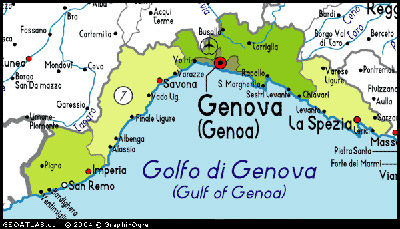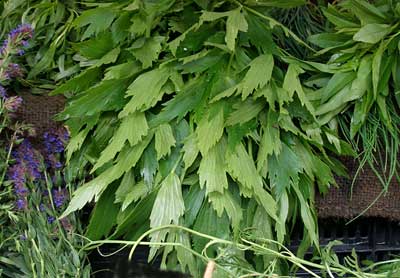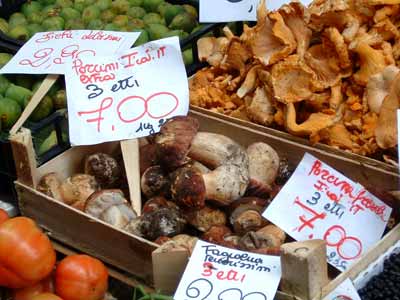
Liguria is the anglicised name for Ligure, a region running along the strip of coastline around Genoa in the north west of Italy. It comprises the provinces of Genoa, Imperia, La Spezia and Savona, and includes the Italian Riviera. The ancient Liguria occupied a much larger area than the present region, even in Roman times. This was the home of Christopher Colombus. The fertile valleys produce generous amounts of fruits and vegetables, pine nuts are produced in the hills and olive oil is of very high quality, without the hype of neighbouring Tuscany. Honey is produced from hives among the olive groves. There is little farming of grains in the region and fish is not as abundant on the coast as one might think. Herbs abound, particularly rosemary, thyme, marjoram and, of course, basil. This is all reflected in the cuisine with pesto, one of the very famous dishes of Genoa, made from the basil and pine nuts, sheep's milk cheeses, garlic and oil that are produced locally.

Liguria is the anglicised name for Ligure, a region running along the strip of coastline around Genoa in the north west of Italy. It comprises the provinces of Genoa, Imperia, La Spezia and Savona, and includes the Italian Riviera. The ancient Liguria occupied a much larger area than the present region, even in Roman times. This was the home of Christopher Colombus. The fertile valleys produce generous amounts of fruits and vegetables, pine nuts are produced in the hills and olive oil is of very high quality, without the hype of neighbouring Tuscany. Honey is produced from hives among the olive groves. There is little farming of grains in the region and fish is not as abundant on the coast as one might think. Herbs abound, particularly rosemary, thyme, marjoram and, of course, basil. This is all reflected in the cuisine with pesto, one of the very famous dishes of Genoa, made from the basil and pine nuts, sheep's milk cheeses, garlic and oil that are produced locally.

Lovage. A large unwieldy herb. Pick the stems off the leaves, tie them and hang them to dry for about 3 days. When crisp, crumble the leaves and store. Good in hotpots. Lovage seeds are used mainly in Indian cooking, and are from a plant of the caraway family. The greenish-brown seeds are a little larger than celery seeds and have a strong aroma of rather coarse thyme. Oregano can be substituted.
A name in Campania for the black boletus mushroom. Excellent to eat from August to October whether raw in salads or cooked or preserved and also freezes well.

A name in Campania for the boletus, cep or porcino mushroom, often used in dried form in stews and stocks.

an Italian lemon liqueur made by extracting the essential lemon oil from the peel (minus the white pith) using a clear and neutral alcohol, typically grain alcohol. Various methods are used to similar effects. The resulting liqueur is a delicate bright yellow with a fragrant and nearly floral bouquet and a smooth to peppery sweet lemon flavor. It was and is typically produced in Southern Italy and in Menton, France. In Italy, it is made throughout Sicily and Sardinia, Apulia, Capri, Ischia, Amalfi, Sorrento, and Naples. Once found only in Italy and southern France, Limoncello has become very popular around the world as a liqueur and in cocktails. In Italy, Limoncello is made with the peel of Sfusato lemons and is a legislatively controlled product bearing a mark on the label showing it's designation.